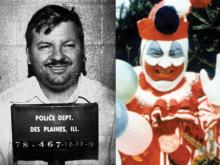
Private Henry Tandey, England’s most decorated World War I hero, took mercy on a wounded German soldier and let him live. On the eve of World War II, Tandey found out the life he spared was that of Corporal Adolph Hitler.
by David Robb
It was an act of mercy that led to the greatest crime of the 20th century and perhaps the greatest crime in human history – the Holocaust. This horrible act of mercy was committed on a battlefield in France in 1918 by one of the bravest men in British history – a young soldier named Henry Tandey, who would go on to become England’s most decorated hero of World War I.
Private Tandey had fought at the First Battle of Ypres in Belgium in October 1914, was wounded two years later during the Battle of the Somme, and again at Passchendaele in November 1917. That same year, he was awarded the Distinguished Conduct Medal for his determined bravery at Vaulx Vraucourt on August 28, and the Military Medal for heroism at Havincourt on September 12.
A year later, he was awarded the Victoria Cross – Britain’s highest award for gallantry – for his conspicuous bravery at the Battle of Marcoing. But it was there, on September 28, 1918, at this little village in northern France, that Tandey’s horrible act of mercy changed the world for the worse in ways that no one could have ever imagined. It was a moment of compassion that would cost the lives of millions of people.
During the battle, Private Tandey’s regiment was being held down by heavy German machine gun fire for most of the day. During the pitched battle, Tandey crawled forward and threw a grenade, taking out the German gunners. He then led a bayonet charge against German positions that won the day.
Afterwards, as the battle wound down, Tandey spotted a wounded German soldier limping out of the smoke that hung over the battlefield. The wounded German never raised his weapon, but stared straight at him. Tandy raised his rifle to fire, but he was an honorable man who’d never shot a wounded or surrendering soldier.
“I took aim but couldn’t shoot a wounded man,” Tandey later recalled, “so I let him go.”
Tandey lowered his rifle. The young German soldier stood his ground, pausing for a heartbeat or two, and then, understanding, slowly nodded his thanks. Then the German turned and walked away to rejoin the battered remnants of his retreating regiment.
Many years later, Tandey would learn that the young German soldier in his sights that day was Corporal Adolf Hitler.
His narrow escape on the battlefield that day would shape Hitler's world view and offer proof that he was being guided by "eternal Providence," which in Germany is called Fügung, and Providence would become his god.
It would be a day – and a face – that Hitler would never forget.
A year after World War I ended, Hitler stumbled upon a photograph of Tandey in a British newspaper, and an article explaining that his old battlefield foe had just received the Victoria Cross from King George V at Buckingham Palace.
In Hitler’s mind, the story was now almost complete. Hitler, who had been awarded Germany’s highest military honor – the Iron Cross, First Class – had been spared by a man who had received England’s highest military honor. Now that’s Fügung!
Next to the photo of Tandey was another picture in the paper that day: a photograph of a painting by the Italian artist Fortunino Matania depicting Private Tandey carrying a wounded comrade from the battlefield.
Hitler kept the article and the photos, and many years later, when he came to power, he gathered together the final pieces of evidence to bolster his belief in Fügung.
The events of that fateful day in northern France would come to light exactly 20 years and one day later when British Prime Minister Neville Chamberlain flew to Munich to meet with Chancellor Hitler in a doomed attempt to avert the next great war.
Chamberlain arrived in Munich on September 29, 1938, and was then taken to Hitler’s majestic mountain retreat near Berchtesgaden in the Bavarian Alps. The newly built chalet, called the Berghof, had stunning views of the mountains of Hitler’s native Austria, and was adorned with expensive antiques and paintings – including some of Hitler’s own water-color sketches.
Hitler showed the prime minister around, commenting on the furniture and paintings, and on the Hartz Mountain canaries that were kept in most of the rooms. At one point on the tour, as Chamberlain walked through one of the many splendid rooms, he noticed a large photograph hanging prominently on the wall. It struck Chamberlain as odd. It was a photograph of the famous painting by Fortunino Matania depicting British troops in a World War I battle scene – a painting that had come to symbolize the tragedy of war, and the very face of British valor. It was a photograph of the painting depicting Private Henry Tandey – England’s most decorated soldier – in the foreground carrying a wounded man from the battlefield.

Delighted by Chamberlain’s puzzled expression, Hitler leapt at the chance to tell the story. Pointing to Tandey’s likeness, he said proudly, “That man came so near to killing me that I thought I should never see Germany again. Providence saved me from such devilishly accurate fire as those English boys were aiming at us.”
As it turns out, Hitler was wrong about the painting. It showed Tandey at the First Battle of Ypres – where Hitler had also fought – not at Marcoing, where Tandey had Hitler in his sights. But he was right about Tandey being the man – four years later than the scene depicted in the painting – who had spared his life.
In 1937, a year before Chamberlain’s visit, Chancellor Hitler had sent off a letter to Tandey’s old regiment requesting a copy of Tandey’s service record, and for a photograph of the painting, both of which were obligingly sent to Hitler in Berlin. Hitler then had the photograph framed and mounted on the wall at his newly completed compound at Berchtesgaden.
Hitler then had his personal adjutant, a Captain Weidmann, write a letter thanking the British regiment for the gift. ”I beg to acknowledge your friendly gift which has been sent to Berlin,” Weidmann wrote. “The Fuhrer is naturally very interested in things connected with his own war experiences, and he…has directed me to send you his best thanks for your friendly gift which is so rich in memories.”
As the two world leaders stood in the Berghof gazing at the photograph, Hitler asked Chamberlain to please extend his best wishes to Tandey on his return to England.
Chamberlain promised that he would.
A few hours later, at 1:30 a.m. on the morning of September 30, 1938, Hitler and Chamberlain reached agreement on the Munich Pact, which temporarily averted war by allowing Germany to annex Czechoslovakia’s Sudetenland. It would forever be known as “appeasement.”
Later that day, Chamberlain flew back to London, and when he got off the plane, he waved the meaningless piece of paper that he and Hitler had signed, and declared to an approving crowd: “Peace for our time!”
A few days later, Chamberlain called Tandey and told him of the extraordinary conversation he’d had with Herr Hitler about the painting, and that Hitler had told him that “That’s the man who nearly shot me!”
Tandey laughed, and told his friends, but thought little more of the incident until war broke out in Europe in 1939. A year later, however, he would think of it often as he hunkered in air raid shelters during the Blitz – Hitler’s horrifying air raids on London. He’d shown Hitler mercy, but Hitler would show none when he had the chance.
In 1940, Tandey told a reporter, “If only I had known what he would turn out to be. When I saw all the people, woman and children he had killed and wounded, I was sorry to God I let him go.”








